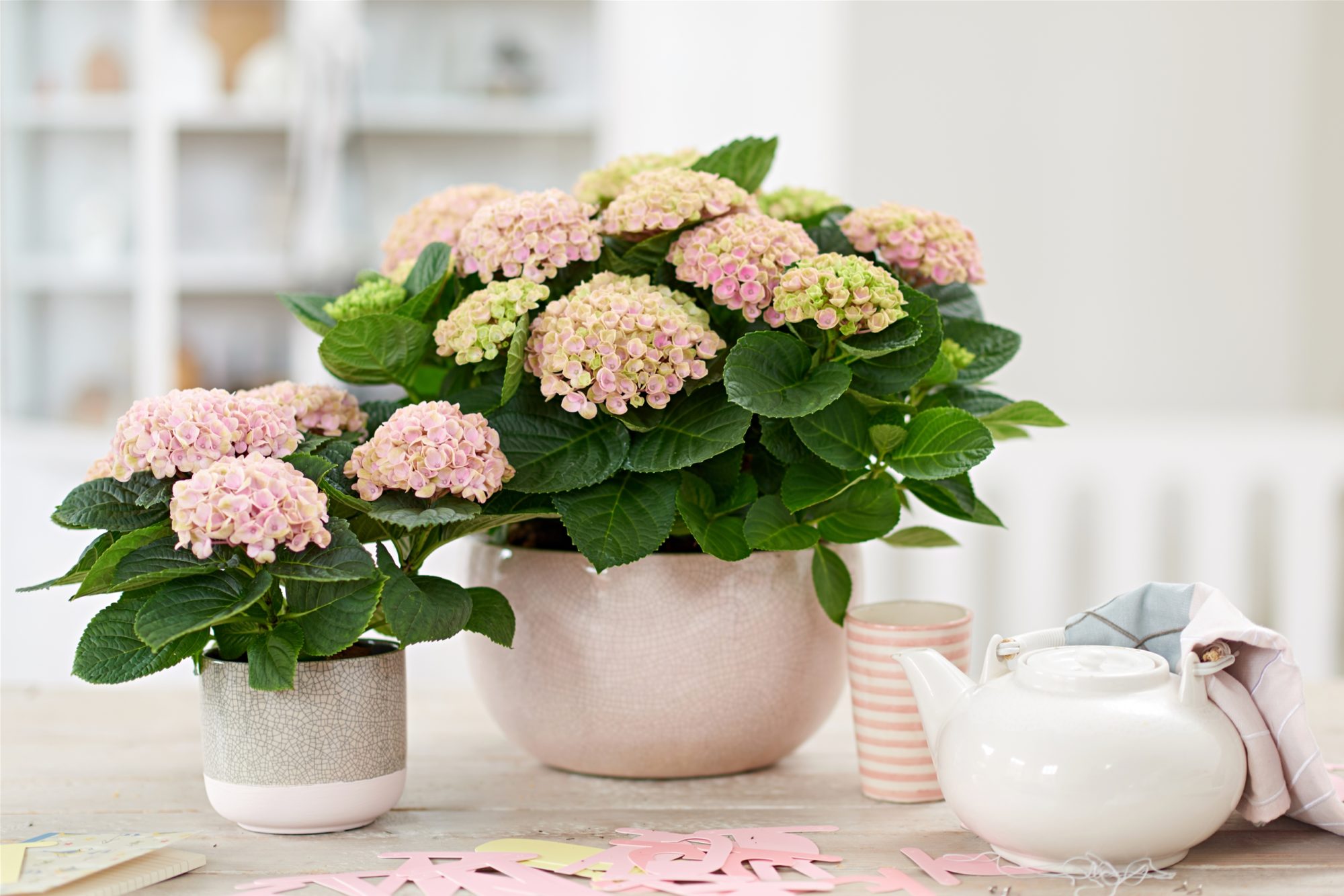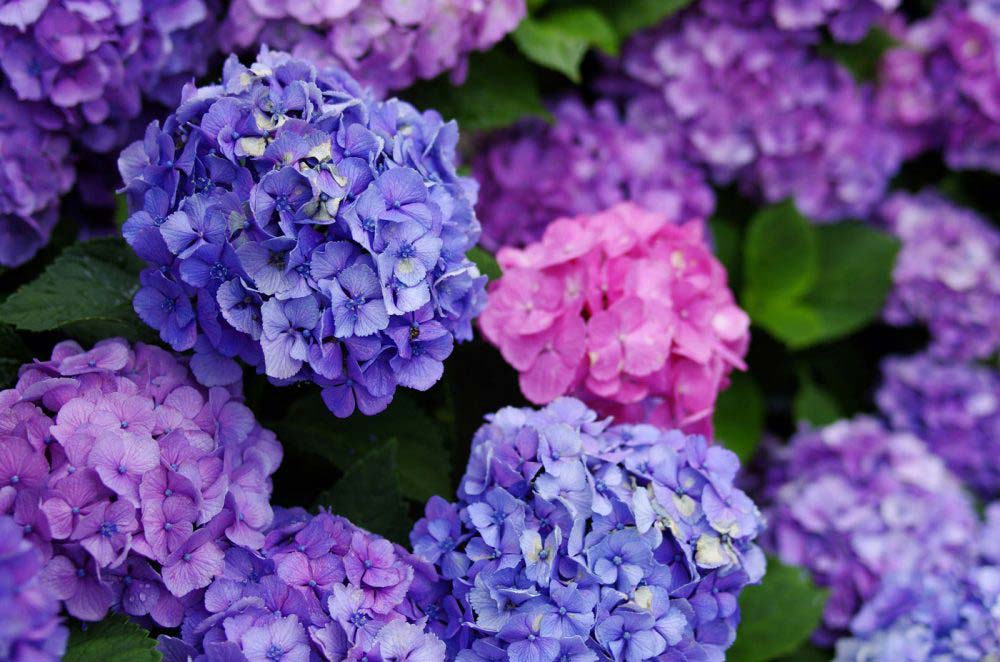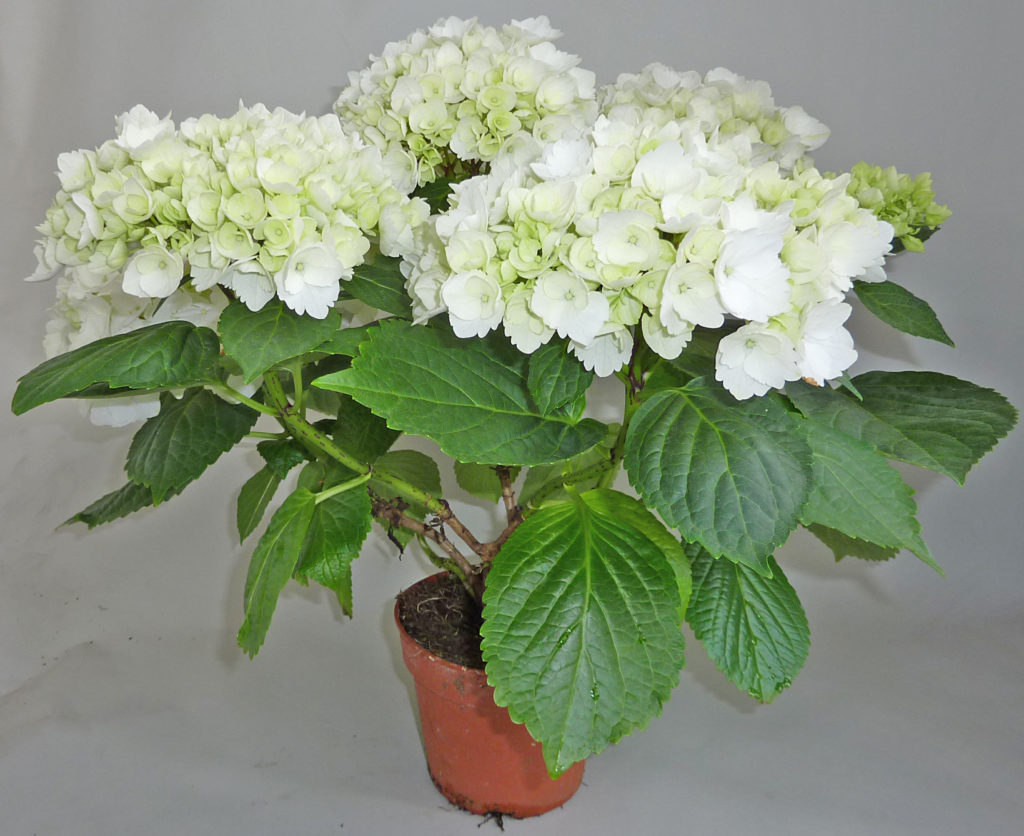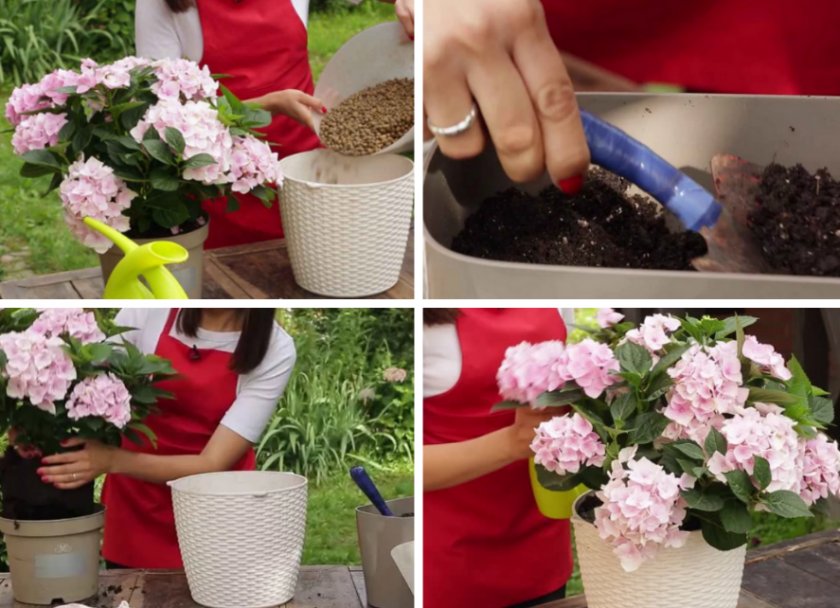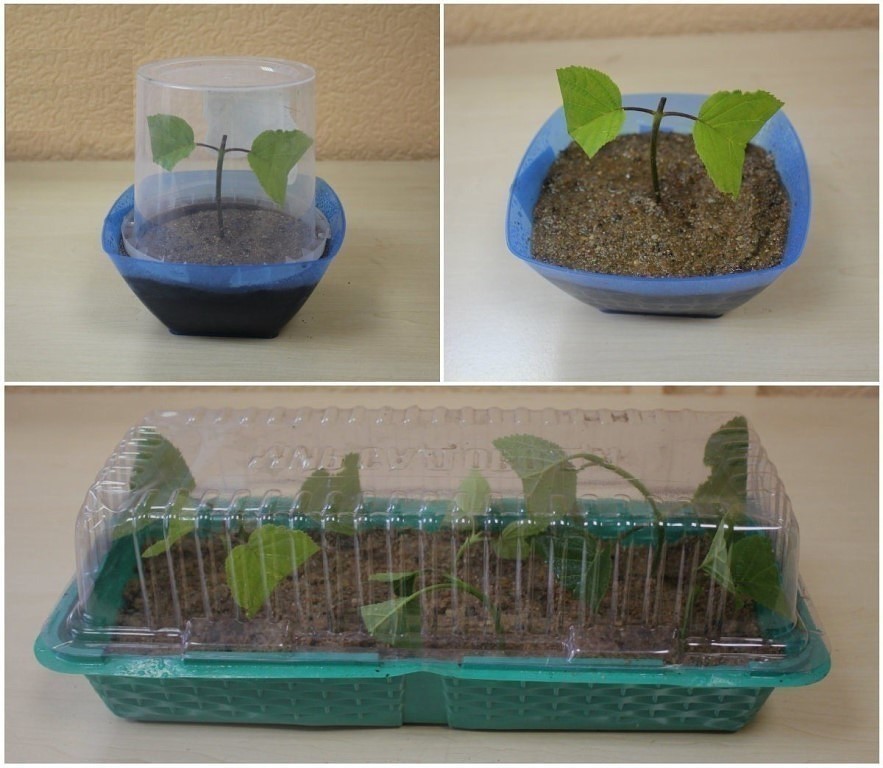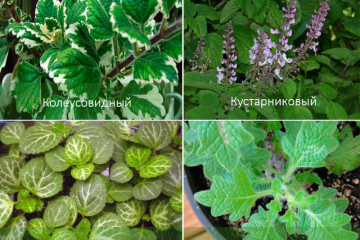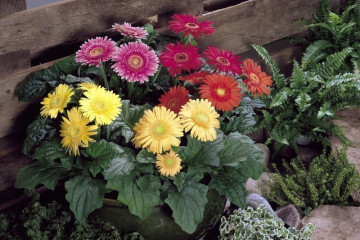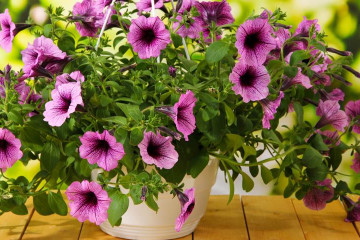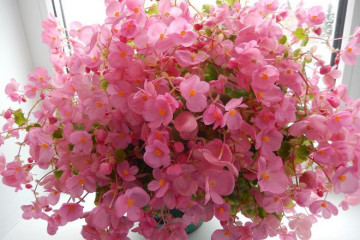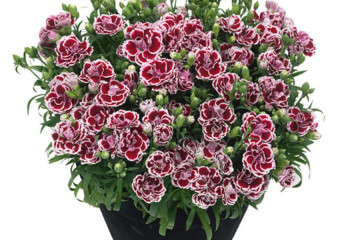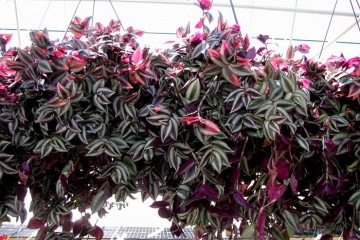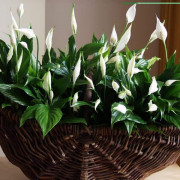Indoor hydrangea - planting and care at home
Content:
- Description of room hydrangea
- The most suitable varieties of hydrangea for growing at home
- How to transplant homemade hydrangea into a pot after purchase
- Hydrangea - home care
- Reproduction
- Diseases and pests, means of combating them
- Is it possible to plant an indoor hydrangea in open ground and how to do it correctly
Hydrangea is a shrub with lush inflorescences and large green leaves. Loved by gardeners and landscape designers. There are about 80 varieties. Some of them are intended for home cultivation, but it is important to consider the differences in planting and care.
Description of room hydrangea
It is necessary to familiarize yourself with the description before purchasing the variety - some varieties differ significantly from each other in height, size, colors and other parameters.
Are there indoor hydrangeas
Indoor hydrangea will adorn any room - lush inflorescences, wide leaves of a juicy green color, lack of aroma (therefore, it does not attract bees and other insects).
Domestic varieties are dwarf subspecies of garden varieties. Small bushes vary significantly in height, although individual owners grow domestic species up to 1.5 m.
Origin
Home hydrangea is a subspecies of the plant introduced to Europe in the XIV century. Initially, it was intended exclusively for the well-to-do strata of the population - luxurious inflorescences were associated with wealth and the special position of the owner. Hydrangea gained particular popularity in England and France.
The shrub is widespread in Asia and America. The largest number of varieties grows in Japan and China. Some frost-resistant species are also found in Russia - mainly in the Far East.
How is it different from a garden hydrangea
The plant looks most familiar on the plots, but there is no need to be afraid to grow shrubs at home - home hydrangea is considered a rather unpretentious flower (if you know certain nuances).
Care differs only in scale. Indoor varieties love water, do not tolerate extreme heat (in summer weather that is too sunny, it is better to remove it from the windowsill).
Features of the
Those familiar with the garden hydrangea know that it is a large bush with lush inflorescences of various shades. Popular names - "destiny", "bride". Miniature varieties practically do not differ:
- inflorescences are spherical, flowers are racemose in shape, in the form of an "umbrella", corymbose;
- leaves are large, saturated green, framed with small teeth;
- the root system is rapidly developing (often visible from underground in pots).
With proper pruning, the leaves are arranged in a heap from below, and flowers bloom from above, forming a bright cap.
Advantages and disadvantages
Hydrangea is a special flower. In order not to ruin the plant, you need to know about the basic rules and requirements for care.
Shrub Disadvantages:
- increased requirements for acidity and composition of the soil (abrupt changes, an excess or absence of minerals leads to a complete absence of inflorescences, the death of the bush);
- abundant watering - the hydrangea needs to be watered often (leaving it for a few days for the sake of a trip will not work);
- the need for a permanent place of growth - the plant does not like frequent transplants, a change in its habitat.
For some growers, grooming can be difficult - this often scares off beginners. You should not worry, many care products are sold ready-made, the main thing is to get ready.
Benefits of indoor hydrangeas:
- lack of aroma - does not attract bees, other insects;
- bright, saturated shades that you can change yourself (from pink to blue, for example);
- lush inflorescences will look great in any interior, attract the attention of others.
Hydrangea is a perennial shrub, so it will delight the attentive owner for several years in a row.
The most suitable varieties of hydrangea for growing at home
Several dozen varieties have been bred by breeders, so it is important to "make inquiries" before buying. Plants differ in appearance and in the nuances of care. Experts recommend the following varieties.
- Compacta
A small shrub with lush foliage. The inflorescences are usually pink or white (depending on the soil). Thanks to competent pruning, it takes on a beautiful shape up to 50 cm high.
- Ramars mars
A miniature variety, the inflorescences reach a diameter of no more than 20 cm. Hydrangea in a pot looks compact, constant pruning is required. The peculiarity of the variety is that over time, the ends of the petals acquire a greenish tint.
- Madame E. Mouillere
The variety grows spherically, it turns out to be compact and spherical. Leaves are glossy, slightly narrowed (in comparison with other species). Inflorescences are dense, usually white, long lasting.
- Soeur therese
The bush blooms early, in the first half of June. The plant reaches a height of 35-40 cm. Inflorescences are spherical, regular, white. The leaves are small, dark green.
- Europe
Decorative dwarf shrub, height no more than 50 cm. Considered medium-sized in its class. The sheets are large. You can distinguish it by the blue tint of the petals.
- Red sensation
Sprawling bush, but dense enough to grow without support. Leaves are glossy, bright green. If you follow the recommended acidity, the flowers will be red.
- Prime
Heap, large-leaved shrub, spherical, slightly flattened. Inflorescences reach 18 cm in diameter, small flowers - up to 3.5 cm, usually pink. The stems grow up to 25 cm.
- Miss saori
The variety appeared in 2013 thanks to Japanese breeders. Large semi-shrub - height and width reach 100 cm. Shoots are highly branched. Inflorescences are pink.
- Bavaria
Blooms from June to October. The shrub can be grown up to 1.5 m.The inflorescences are large - up to 20 cm.
It blooms profusely, the color of the petals is blue.
How to transplant homemade hydrangea into a pot after purchase
Home care and maintenance begins from the moment of the first transplant after purchase. The plant is recommended to be replanted annually, the rules are the same. Pot, soil, drainage, top dressing should be purchased in advance.
Selection of capacity
Hydrangeas are sold in a pot that cannot be nursed. A transplant is required immediately after purchase. A new container is selected based on the size of the seedling. The pot should be wide and shallow.
Ground requirements
Home care for a room hydrangea involves the choice of a certain soil. The plant does not tolerate alkaline soil. A land with high acidity will provide good growth and vigorous flowering.
You can use purchased soil, for azaleas, for example. Expanded clay balls are suitable as drainage.
How to plant
You can transplant the plant on a wide table, which is previously covered with a film or newspaper. Then the pot is prepared. Drainage is poured at the bottom, about 1-2 cm. Earth is poured on top, distributing it to the side walls of the container - it is necessary to form a pit.
The seedling is placed in the center of the pot pit. Gently holding the stem of the plant, sprinkle it with earth to the desired level. It should not be too strong. After planting, it is enough to spray the leaves from a spray bottle, watering begins the next day.
Hydrangea - home care
Every lover of this type of flowers needs to know how to care for a hydrangea in an apartment. The plant is considered capricious, so it is important to take into account certain nuances.
Temperature control and ventilation
For home hydrangeas, room temperature is suitable, which is usually kept in the range of 18 ... 22 ° C. For the winter, it is better to rearrange the pot to a cooler place (optimal values are 7 ... 9 ° C).
The flower does not tolerate drafts, therefore, when airing the room, it is better to remove the plant from the window.
Lighting and flower placement on the windowsill
Hydrangea loves well-lit places, but does not tolerate direct sunlight. If kept on a windowsill, consider the direction of the window. If necessary, create additional shading. Otherwise, white spots will appear on the leaves - burns from ultraviolet radiation.
Watering and spraying
When caring for a hydrangea at home, it is important not to forget about timely watering. In summer, the plant is watered regularly and abundantly, in winter and autumn - moderately.
The water should be at room temperature. Lemon juice can be added from time to time (5 drops per liter of liquid).
Spraying is required - leaves, flowers.
Fertilization and feeding
Homemade varieties need regular soil replenishment - once every two weeks. Fertilizers recommended for flowering plants are suitable for hydrangeas.
What to do when indoor hydrangea has faded
Vigorous flowering ends in autumn, usually in October. After that, the plant prepares for wintering.
The faded ends must be carefully cut off. Care - top dressing, pruning, compliance with the regime - do not stop in winter.
Pruning
Indoor varieties also need competent formation, like garden varieties. The procedure is carried out twice a year:
- in autumn, at the end of flowering, remove half the length of the stems and weak branches;
- weak shoots are cut in spring.
Sometimes the top of the flower is removed. This helps to make the shrub more lush and rounded.
Reproduction
Buying a seedling from a store is popular, but not always the best option. There is no information about care, possible illnesses, sometimes "surprises" come up. Hydrangea can be propagated at home in several ways.
Growing from seeds
There is no special pre-planting preparation of hydrangea seeds. The seeds are placed in the soil in February. We recommend using small, separate containers. The soil is used purchased or prepared:
- humus, leafy or soddy soil - equal parts;
- peat, sand - ½ part.
Cover the pots with glass. Every day it is necessary to ventilate and moisten crops. Better to use a spray bottle. After the first shoots appear, the glass can be removed.
Cuttings
It is considered the easiest bush breeding method. Held at the end of winter. Cuttings are cut from the basal shoots - about 8 cm long, a maximum of three branches. The lower sheets are removed, the upper ones are cut in half.
The workpieces are placed in pots, covered with glass jars. Ventilate every day. Lighting should be available, but not in direct sunlight. The seedlings will be ready in 3-4 weeks.
Dividing the bush
It is carried out during the annual plant transplant. It is important to carefully separate the stems of the hydrangea without damaging the branches. The roots and shoots are shortened a little.
After dividing, the bushes are planted in separate pots. In this way, a mix of varieties is often made.
Layers
The method is more suitable for garden varieties. Indoor hydrangeas are placed next to earth-filled pots. Shoots, new stems are carefully unrolled (unwound), moving to the ground in a new container. To prevent the shoots from curling, they must be fixed (for example, with a wooden handle).
After 3-4 weeks, the plant can be detached.
Diseases and pests, means of combating them
Any cultivated plant is exposed to various factors, including sometimes the development of diseases, colonization of harmful insects occurs. Hydrangea is no exception, although it is considered a fairly hardy plant.
Typical diseases and pests:
- gray rot - appears from excessive humidity, the leaves are treated with Bordeaux liquid;
- powdery mildew - also from high humidity, is treated with copper-containing solutions;
- aphids, spider mites - appear in dry air and moist soil, soap solution, Karbofos act against insects;
Is it possible to plant an indoor hydrangea in open ground and how to do it correctly
Any variety of indoor hydrangea can be transplanted into open ground. The procedure is carried out in the same way - a hole is prepared, the plant is moved and the roots are sprinkled with earth.
In order for the bush to move away from the container better, the pot is placed on its side, a ruler is carefully drawn between the walls and roots. It is important not to stop abundant watering, feeding the plant.
There should be no doubt whether it is possible to grow a hydrangea in a pot at home. The plant requires careful and constant care, but the abundance of flowers and large inflorescences will delight any owner.
